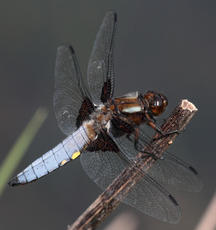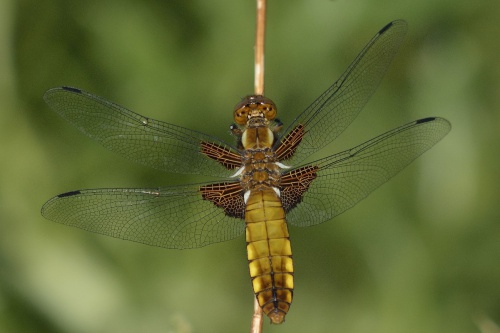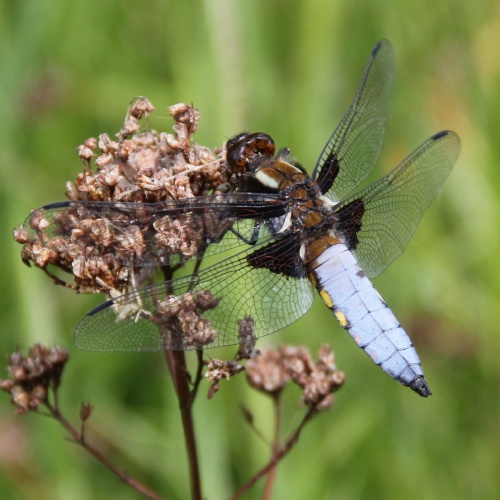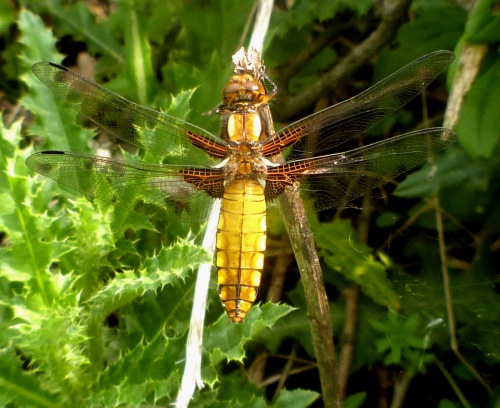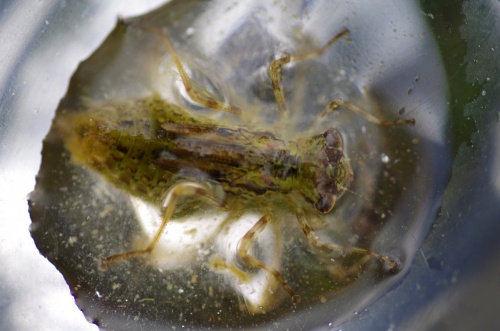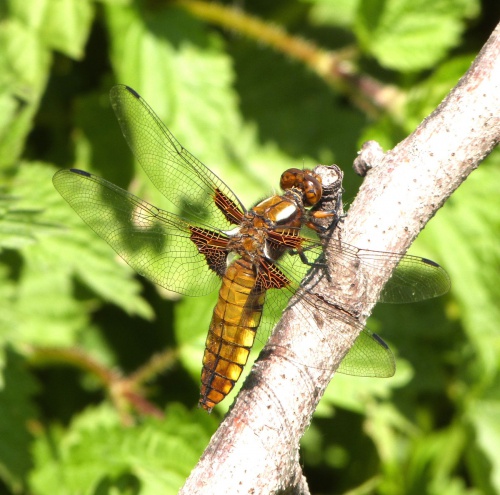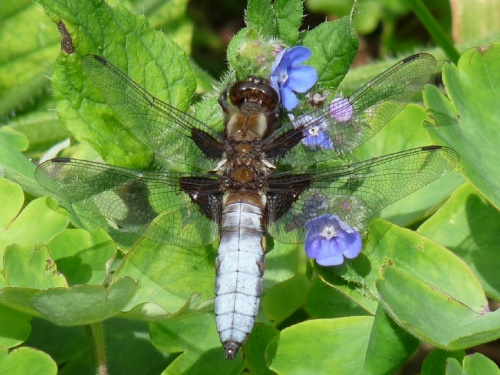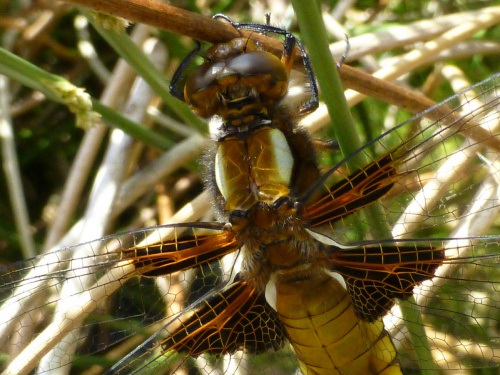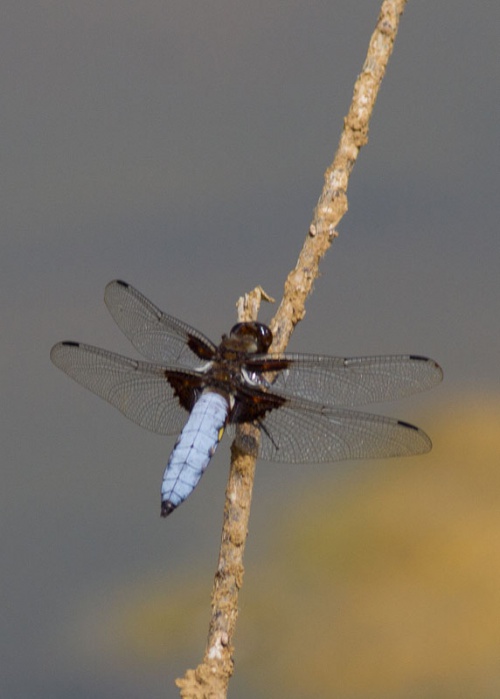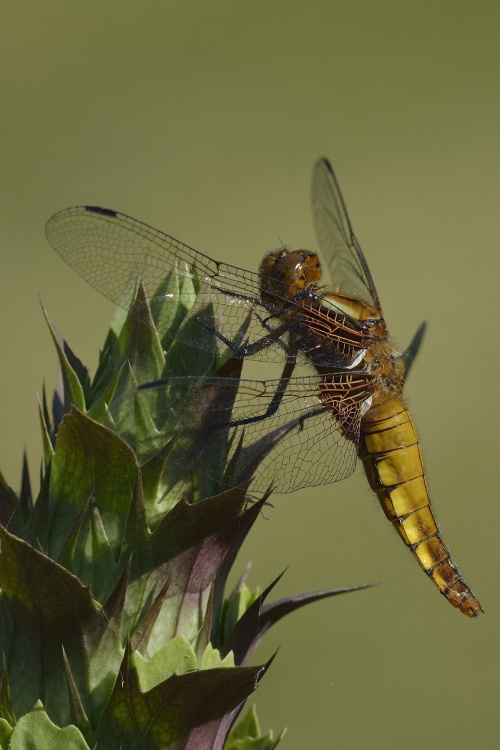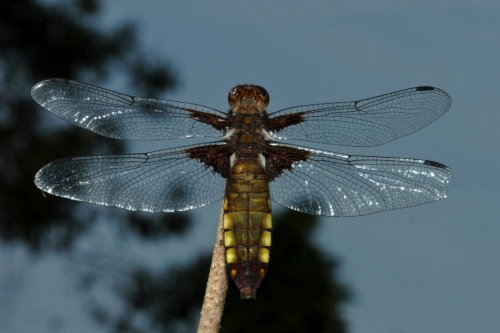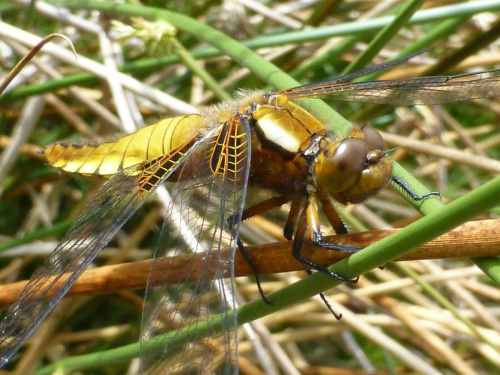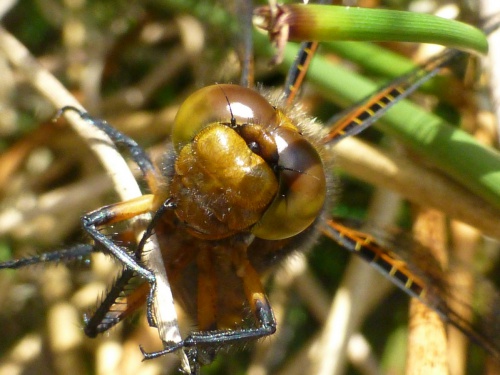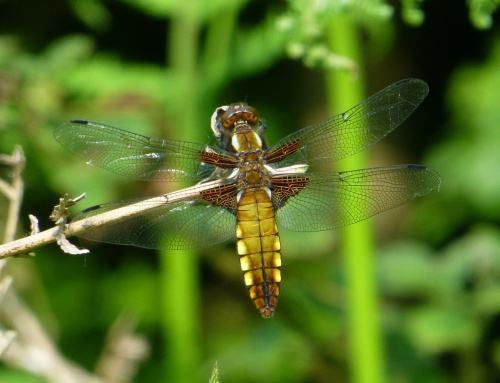Broad-bodied Chaser - Libellula depressa
A medium-sized dragonfly with a very broad, flattened abdomen. The male is blue and the female yellow. Larvae are very similar to those of the Four-spotted Chaser (Libellula quadrimaculata) but have deeper serrations for the teeth and the eyes protrude more upwards and less to the sides of the head.
It can be distinguished from the Four-spotted Chaser by the absence of the wing spots.
It favours shallow still water habitats and is found in well-vegetated and still ponds, including garden and farm ponds.
Late May to early August.
It is quick to colonise new ponds. The larvae take 1-3 years to develop and lay partially buried in the bottom mud. They can even survive for a while if the pond dries up.
Locally frequent in England and Wales but scarcer further north.
Widespread but somewhat local in distribution in our area, being found in suitable locations throughout Leicestershire and Rutland.
A species that favours shallow stillwater habitats, this distinctive dragonfly is widespread but somewhat local in distribution, being found in suitable locations throughout VC 55. Historic data shows that the Broad-bodied Chaser was relatively abundant in the 1930s, with Roebook (1932) describing it as 'fairly common in Leicestershire'. There were few records between this period and the 1980s, after which time it appears to have made a resurgence, and is now more widely distributed.
Leicestershire & Rutland Map
Enter a town or village to see local records
MAP KEY:
Yellow squares = NBN records (all known data)
Coloured circles = NatureSpot records: 2020+ | 2015-2019 | pre-2015
UK Map
Species profile
- Common names
- Broad-bodied Libellula, Broad-bodied Chaser Dragonfly, Broad-bodied Chaser
- Species group:
- Dragonflies and Damselflies
- Kingdom:
- Animalia
- Order:
- Odonata
- Family:
- Libellulidae
- Records on NatureSpot:
- 273
- First record:
- 01/06/1948 (Wesley, Isaac)
- Last record:
- 12/05/2024 (Catherine Horrell)
Total records by month
% of records within its species group
10km squares with records
The latest images and records displayed below include those awaiting verification checks so we cannot guarantee that every identification is correct. Once accepted, the record displays a green tick.
In the Latest Records section, click on the header to sort A-Z, and again to sort Z-A. Use the header boxes to filter the list.


